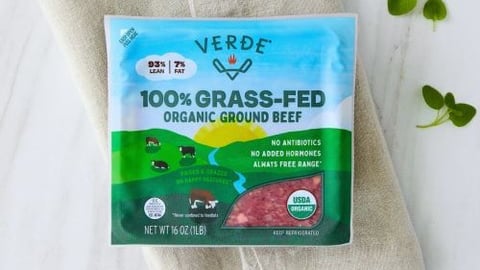The Rise of Poultry: How Consumer Demand Is Reshaping the Market
Birds of a feather may flock together, but the poultry market continues on a differentiation streak, with more products, price points and brands. Trends in the meat case, freezer aisle, and deli and prepared foods areas are driven by shoppers seeking solutions — and, often, innovations — across the omnichannel.
Poultry remains a protein staple, especially in an inflationary environment that’s only recently calming down from earlier highs. Market data affirms that chicken and, to a lesser extent, turkey, are grocery stalwarts: According to the 2024 “Power of Meat” report from FMI — the Food Industry Association, dollar sales of fresh poultry hit $18.4 billion in 2023, a 2.9% gain compared with the 1.4% increase logged for the $36.2 billion fresh beef category. During that same period, turkey products rang up $3.3 billion, behind pork but ahead of lamb, with a 2% lift from the previous year.
Information collected during summer 2024 shows a continuation of such trends. Data from Circana and 210 Analytics reveals that fresh chicken passed $1.5 billion in sales this past June, 2.6% more than in June 2023.
“During times of pocketbook pressure, chicken sales always shine,” says Ann-Marie Roerink, principal at San Antonio-based 210 Analytics LLC. “Chicken sales have been outgrowing the rest of the department in pounds, which is the best way to judge demand.”
As for what comes next, she predicts: “For the second half of the year, I believe the continued high levels of concern among consumers and the resulting behaviors are going to make the second half much like the first half. Consumers still have their feet on the brakes as it relates to spending.”
[RELATED: FMI Digs Into How Grocery Shoppers Find Value]
At the near midpoint of the 2020s, poultry is a protein powerhouse on a consumption basis. The U.S. Department of Agriculture (USDA) pegged per capita chicken consumption at around 100 pounds in 2023. In comparison, beef per capita consumption was approximately 57 pounds, and per capita turkey consumption came in at close to 15 pounds.
The fact that chicken is priced competitively is fueling consistent demand. Data from Circana and 210 Analytics shows that fresh chicken had an average price of $3.05 per pound in June 2024 versus $6.86 for fresh beef and $3.26 for fresh pork. Additionally, chicken had the smallest change in price on a year-over-year basis, up only 0.3% compared with June 2024, while beef went up 5.3% and pork rose 7.1%. Meanwhile, fresh turkey had an average price of $4.17 in June 2024, down 1.9% from the prior year.
Rick Stein, VP of fresh at Arlington, Va.-based FMI, tells Progressive Grocer that price is a key factor in poultry’s perennial appeal, but so are other attributes. “Chicken is winning not just because of affordability, but more because of versatility,” notes Stein. “Chicken has been a great item, served in so many different ways, and [there’s also] the fact that it takes only 16 weeks to grow chickens, versus years for cows or pigs.”
Convenience is Back
To Stein’s point, shoppers put chicken and turkey in their carts for a host of reasons, and convenience is one of those reasons. Although Circana and 210 Analytics data indicates that value-added fresh poultry is currently trailing conventional fresh poultry, products that save consumers time in the kitchen continue to roll out.
Fredericksburg, Pa.-based Bell & Evans recently launched kebob-style chicken breast cubes. Part of the company’s Great on the Grill portfolio, the boneless, skinless breasts are portioned and ready to be seasoned or marinated right in the tray.
Longtime poultry leader Perdue Farms, of Salisbury, Md., also zeroes in on convenience, recently adding Hickory Smoked Chicken Breast Strips and Shredded Roasted White Meat Chicken to its fully cooked Short Cuts line.
Many convenience-oriented poultry offerings are showing up in the freezer aisle, reflecting both consumers’ penchant for heat-and-serve foods and their use of devices like air fryers. Pilgrim’s Global, of Greeley, Colo., is going all in on nuggets, offering a range of sizes and flavors, including new Chicken Pot Pie and Cheesy Jalapeño Loaded Nuggets, Ultimate Nuggets, and Mini Nuggets available in Zesty Ranch, Buttery and Original flavors.
“Today’s consumer does not want to eat boring chicken, but the lack of variety in the frozen chicken aisle has left them with dry, bland and forgettable options,” says Sergio Nahuz, president, prepared foods and chief marketing officer at Pilgrim’s U.S. “At Pilgrim’s, we’re combating chicken monotony by reimagining what chicken nuggets can be. Our new brand is bold and imaginative, with nuggets that put taste at the forefront, because we’re not chicken about chicken.”
The popular Hooters restaurant chain is expanding into frozen poultry as well. The brand teamed up with licensed food partner Golden West Food Group to distribute frozen BBQ Smoked Wings, Dry Rub Smoked Wings, Buffalo Style Boneless Wingz and Buffalo Style Popcorn Chicken to Publix Super Markets stores. “Whether it’s an easy meal at home or planning food on the go, consumers now have another way to enjoy the world-famous taste of Hooters with these new frozen appetizers and snacks,” says Bruce Skala, CMO of Atlanta-based Hooters of America.
Springdale, Ark.-based Tyson Foods Inc. continues to stake out more territory in the freezer case, too. The major player recently introduced Honey Chicken Bites and Restaurant Style Crispy wings that can be cooked in an oven or air fryer.
Beyond product R&D, other brands are updating their packaging. Garner, N.C.-based Butterball LLC, for its part, has recently launched a packaging refresh that consists of a new blue design and an interactive QR code to boost customer engagement.
Transparency on the Table
While consumers want to save time and money, many are taking more time to learn about the poultry they buy and are seeking out products that reflect their values. Accordingly, poultry brands have become more transparent about their production practices.
For example, Diestel Family Ranch, in Sonora, Calif., recently became the first turkey producer to achieve third-party Regenified certification. The family-owned producer of sustainably raised turkeys sourced more than 650 tons of Certified Regenified corn earlier this spring.
[RELATED: Whole Foods Market CEO Shares Regenerative Message at Milken Institute Conference]
“It is an audit-based and data-based outcome for the regenerative initiative, which largely revolves around soil health and follows stated principles for certification,” explains fourth-generation farmer Heidi Diestel. “The regenerative initiative is a fundamental shift in the way that we view our farming and the impact we have, not just on the products we are producing, but the environment.”
Even before this designation, Diestel Family Ranch was an early organic turkey producer and managed a pasture program with rotational grazing.
According to Heidi Diestel, such information is increasingly compelling to savvy shoppers. “The consumer wants to make an informed choice — they want one that is better for the earth,” she asserts, adding that ample opportunities exist to improve production practices and educate customers.








